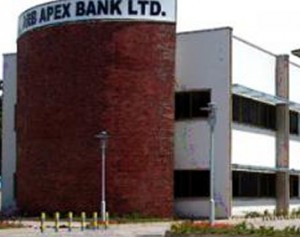Kintampo Rural Bank’s assets grow by 12.92% – CEO
 Assets of the Kintampo Rural Bank in the Bono East Region grew by 12.92 per cent in 2021, strengthening the bank’s efforts to facilitate the socio-economic growth of the region.
Assets of the Kintampo Rural Bank in the Bono East Region grew by 12.92 per cent in 2021, strengthening the bank’s efforts to facilitate the socio-economic growth of the region.
Mr Martin Mensah, the Chief Executive Officer of the Bank, said the shareholders’ fund also increased from GH¢10.94 million in 2020 to GH¢12.30 million in 2021, a marginal increment of 12.43 per cent.
In an interview with the Ghana News Agency (GNA) at Kintampo, Mr Mensah said customer deposits also grew by 10.65 per cent in 2021 and the bank also spent GH¢29,690 on corporate social responsibility.
The amount was channeled into social interventions in health, education and agriculture as well as community development.
Mr Mensah said the bank was collaborating with the Ministry of Gender, Children and Social Protection, and the Ghana Interbank Payment and Settlement System (GiPSS) to ensure beneficiaries of the livelihood Empowerment Against Poverty (LEAP) received their allowances without difficulties.
Currently, it is serving more than 8,000 LEAP beneficiaries in the Kintampo South, Kintampo North, and Techiman North districts.
In its quest to support agriculture and the food value chain, the bank is partnering with the Mobilising Finance in Agriculture (MFA) to implement a four-year agriculture financing project in the area.
The Feed the Future Ghana MFA, launched in 2021, is a four-year, $19 million USAID Activity that aims to increase the availability of commercial financing for agriculture to facilitate capital investment and promote trade.
The project aimed at increasing access to agricultural finance for selected staples including maize, groundnut, shea, soya bean, mango and cashew and other high-value export commodities in the region.
Mr Mensah called on shareholders and customers to remain loyal and support the bank’s operations.
Established on October 28, 1978, the Kintampo Rural Bank was granted license on January 10, 1984.
It was the first rural bank to be established in the Bono, Bono East and Ahafo regions and the seventh in Ghana.
Source: GNA
